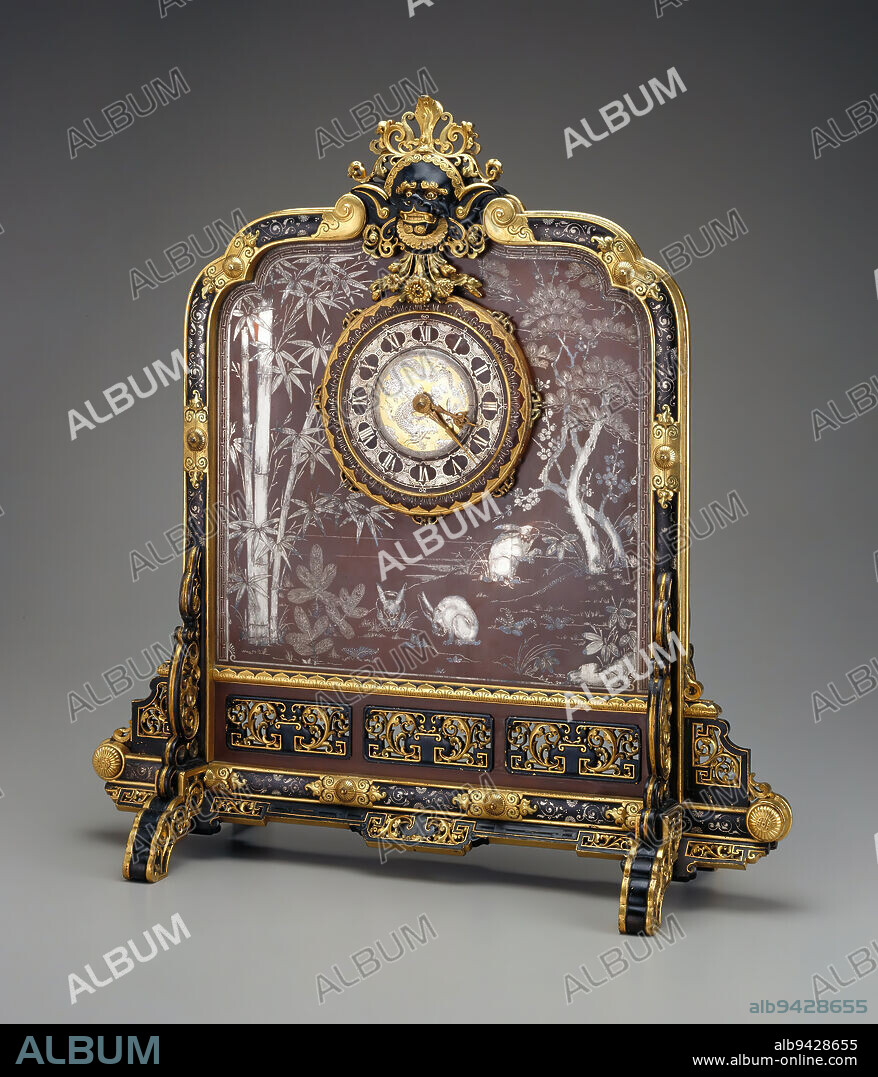alb9428655
Clock, c. 1869, Emile-Auguste Reiber; Maker: Christofle, French, 1826-1893, 20 1/2 x 19 1/2 x 7 3/4 in. (52.07 x 49.53 x 19.69 cm)6 1/2 x 2 3/8 x 7/8 in. (16.51 x 6.03 x 2.22 cm) (pendulum), Silver, bronze, copper, gilt, pigment, France, 19th century, This magnificent clock illustrates some of the earliest Japanese influences on European decorative arts following the reopening of Japan to the Western world in 1854. The clock combines European and Asian iinfluences. Its overall form is derived from an 18th-century Chinese table screen; the face and whimsical beast above it is inspired by Tibetan mandalas; and the silver inlay depicts scenes taken from Japanese paintings, lacquerware, and ceramics.

|
Añadir a otro lightbox |
|
Añadir a otro lightbox |



¿Ya tienes cuenta? Iniciar sesión
¿No tienes cuenta? Regístrate
Compra esta imagen.
Selecciona el uso:

Descripción:
Ver traducción automática
Clock, c. 1869, Emile-Auguste Reiber; Maker: Christofle, French, 1826-1893, 20 1/2 x 19 1/2 x 7 3/4 in. (52.07 x 49.53 x 19.69 cm)6 1/2 x 2 3/8 x 7/8 in. (16.51 x 6.03 x 2.22 cm) (pendulum), Silver, bronze, copper, gilt, pigment, France, 19th century, This magnificent clock illustrates some of the earliest Japanese influences on European decorative arts following the reopening of Japan to the Western world in 1854. The clock combines European and Asian iinfluences. Its overall form is derived from an 18th-century Chinese table screen; the face and whimsical beast above it is inspired by Tibetan mandalas; and the silver inlay depicts scenes taken from Japanese paintings, lacquerware, and ceramics.
Crédito:
Album / quintlox
Autorizaciones:
Modelo: No - Propiedad: No
¿Preguntas relacionadas con los derechos?
¿Preguntas relacionadas con los derechos?
Tamaño imagen:
2693 x 3141 px | 24.2 MB
Tamaño impresión:
22.8 x 26.6 cm | 9.0 x 10.5 in (300 dpi)
 Pinterest
Pinterest Twitter
Twitter Facebook
Facebook Copiar enlace
Copiar enlace Email
Email
